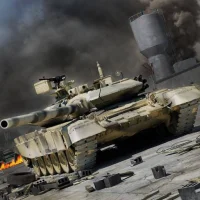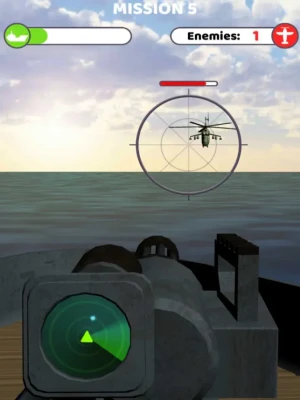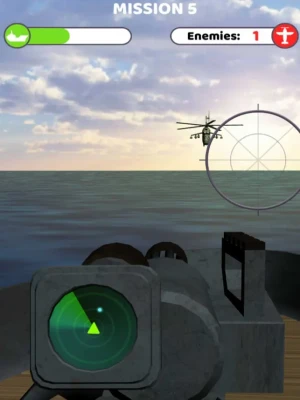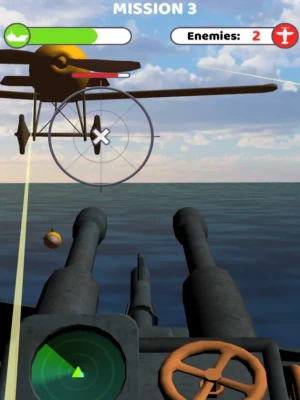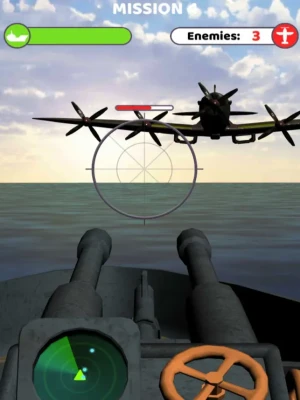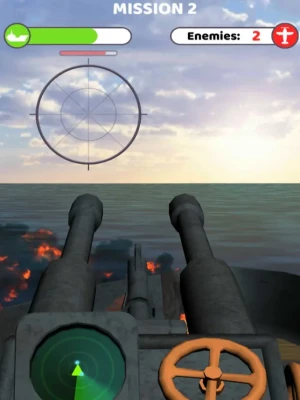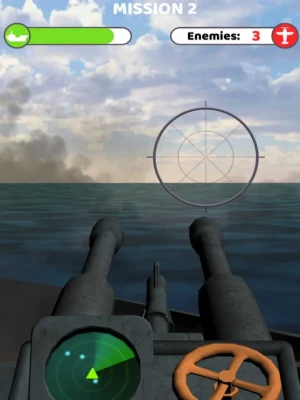
Latest Version
0.0.386
January 23, 2025
Playcus Limited
Games
iOS
267.9 MB
0
Free
Report a Problem
More About WAR MACHINE 3D
Master the Seas: Become the Ultimate Naval Commander
In the vast expanse of the oceans, where battles rage and strategies unfold, the quest for supremacy is relentless. To be the ruler of the war in the seas, one must harness not only tactical prowess but also an understanding of naval warfare's intricacies. This article delves into the essential elements that will empower you to dominate the maritime battlefield.
Understanding Naval Warfare
Naval warfare is a complex domain that combines strategy, technology, and leadership. It involves the use of naval forces to achieve specific objectives, whether they be territorial control, resource acquisition, or the protection of trade routes. To excel in this arena, one must grasp the fundamental principles that govern naval engagements.
Strategic Planning: The Key to Victory
Every successful naval commander knows that victory begins with meticulous planning. Strategic planning involves assessing the strengths and weaknesses of both your forces and your adversaries. Here are some critical components to consider:
- Intelligence Gathering: Knowledge is power. Utilize reconnaissance and intelligence to understand enemy movements and capabilities.
- Resource Allocation: Efficiently manage your fleet, ensuring that each vessel is equipped and ready for battle.
- Logistics and Supply Lines: Maintain robust supply lines to support your operations and sustain your forces during prolonged engagements.
Building a Powerful Fleet
Your fleet is your backbone in naval warfare. To establish dominance, you must invest in a diverse array of vessels, each serving a unique purpose. Consider the following types of ships:
- Aircraft Carriers: These floating airbases project power and provide air support for ground and naval operations.
- Submarines: Stealthy and formidable, submarines can disrupt enemy supply lines and gather intelligence without detection.
- Destroyers and Frigates: Essential for escorting larger vessels and engaging in surface combat, these ships are versatile and agile.
Mastering Naval Tactics
In the heat of battle, effective tactics can turn the tide. Here are some key tactics to employ:
- Flanking Maneuvers: Outmaneuver your opponent by attacking from the sides, catching them off guard.
- Hit-and-Run Strategies: Use speed and agility to strike quickly and retreat before the enemy can respond.
- Formation Strategies: Organize your fleet into formations that maximize firepower and defensive capabilities.
Leadership and Morale
A successful naval commander must also be a great leader. The morale of your crew can significantly impact the outcome of battles. Here are some ways to foster a positive environment:
- Clear Communication: Ensure that your orders are understood and that your crew feels informed and involved.
- Training and Drills: Regular training sessions will prepare your crew for various scenarios, boosting their confidence and competence.
- Recognition and Rewards: Acknowledge the hard work and bravery of your crew to maintain high morale and loyalty.
Adapting to Modern Warfare
As technology evolves, so does the nature of naval warfare. Embrace modern advancements to stay ahead of the competition:
- Cyber Warfare: Protect your fleet from cyber threats and utilize technology to gain an advantage over your adversaries.
- Advanced Weaponry: Invest in cutting-edge weapons systems that enhance your fleet's combat capabilities.
- Data Analytics: Use data to analyze past battles and predict enemy movements, allowing for more informed decision-making.
Conclusion: Claim Your Throne on the High Seas
To be the ruler of the war in the seas, one must combine strategic planning, a powerful fleet, effective tactics, and strong leadership. By mastering these elements and adapting to the ever-changing landscape of naval warfare, you can establish your dominance on the high seas. The ocean is vast, and the battles are fierce, but with determination and skill, you can emerge victorious and claim your rightful place as the ultimate naval commander.
Rate the App
User Reviews
Popular Apps










Editor's Choice









